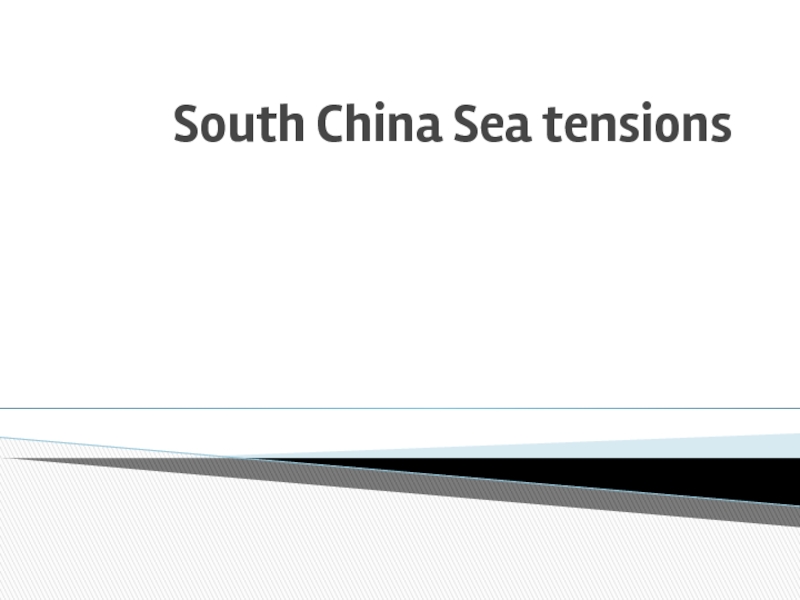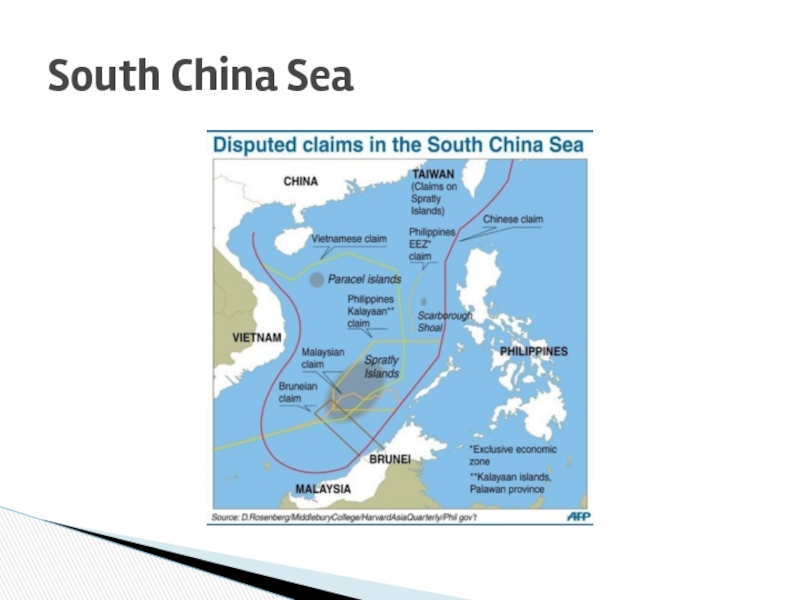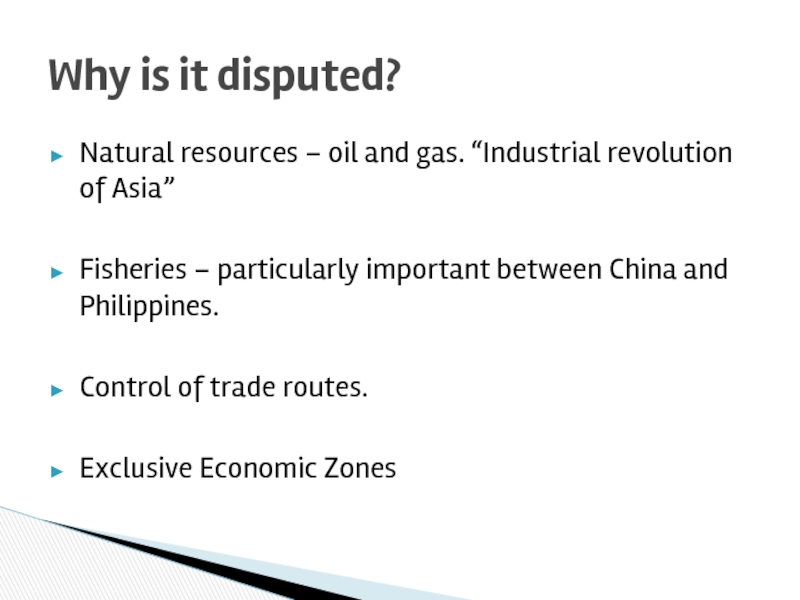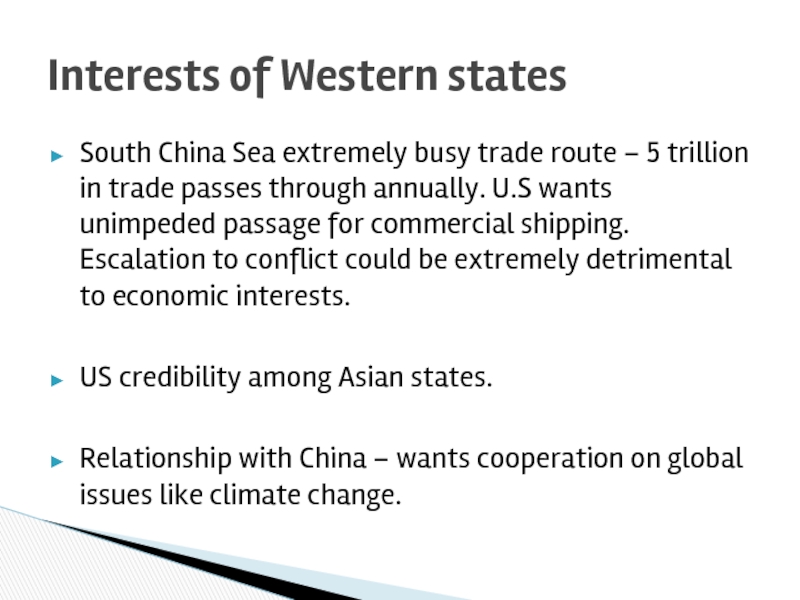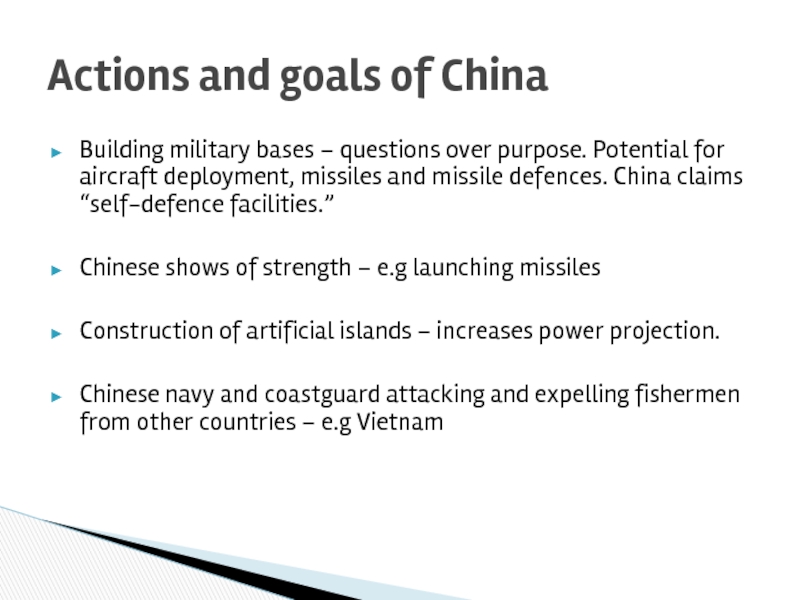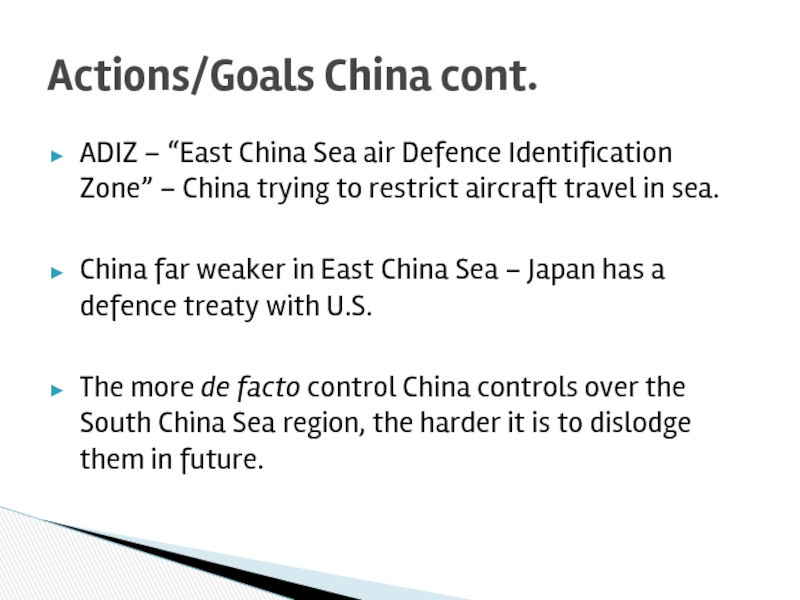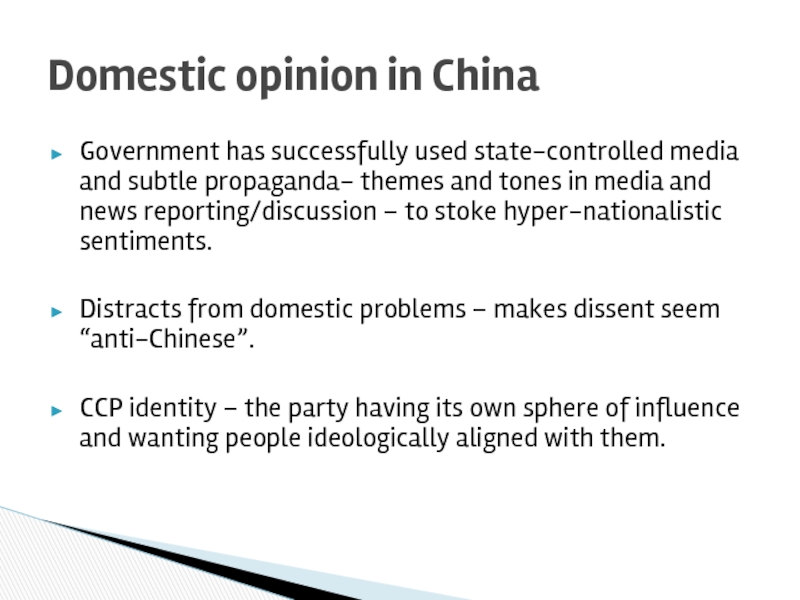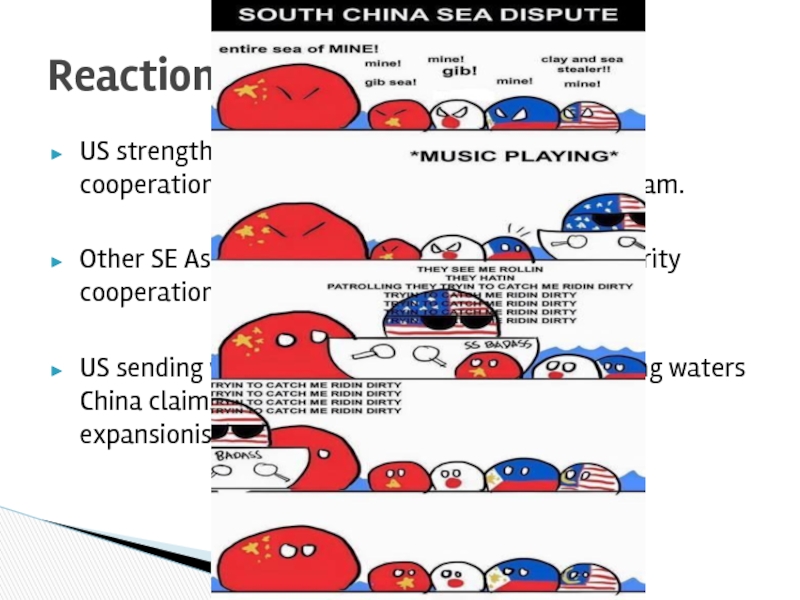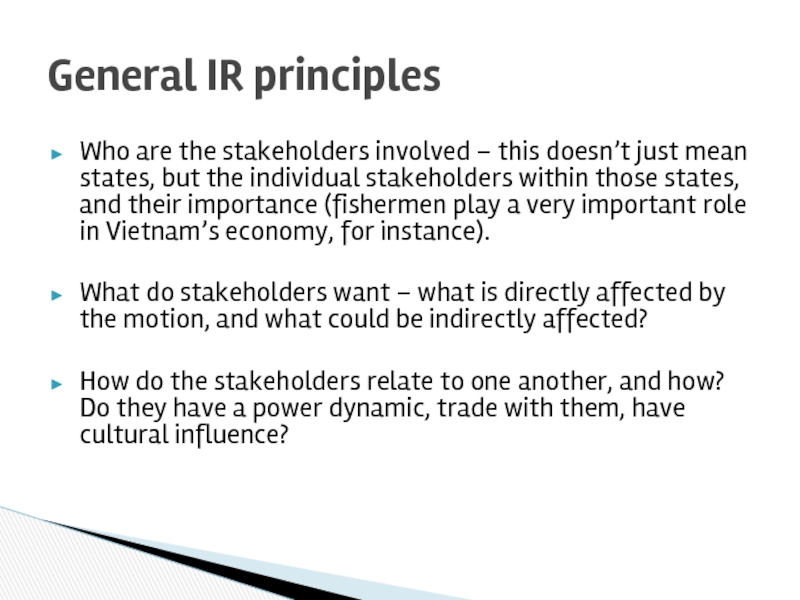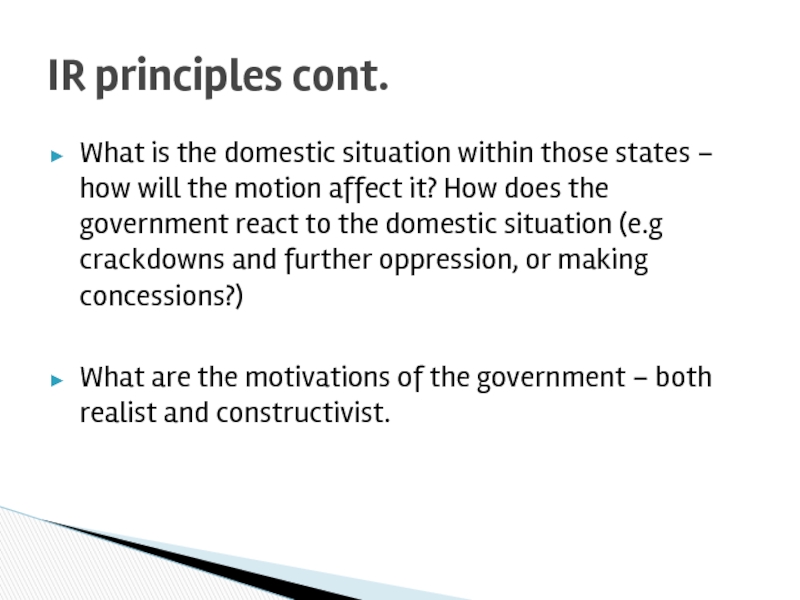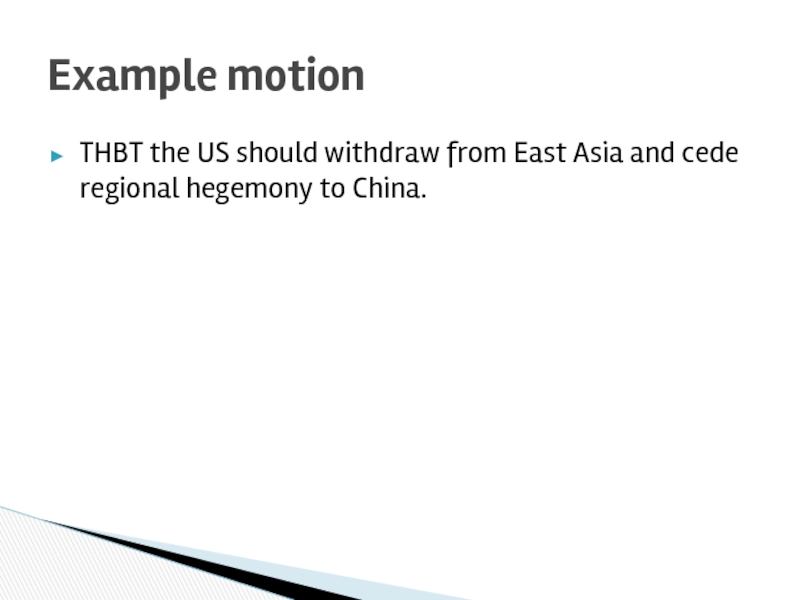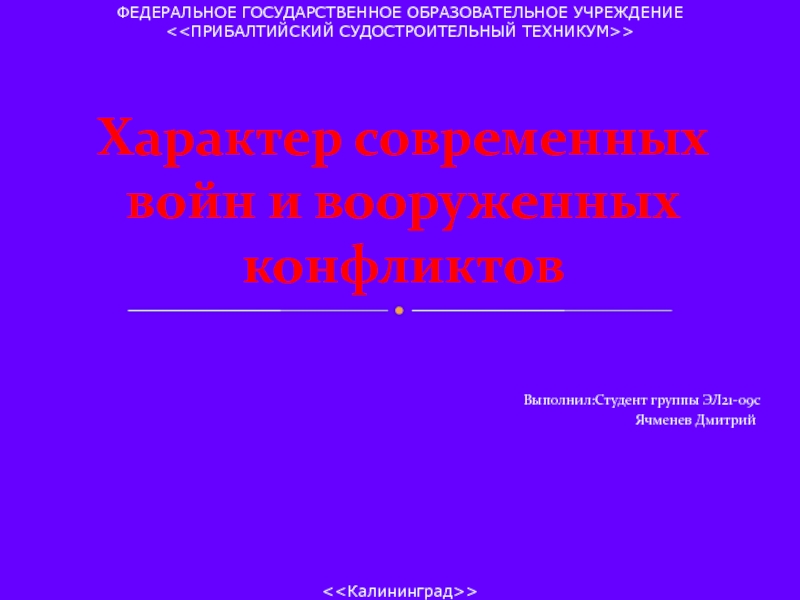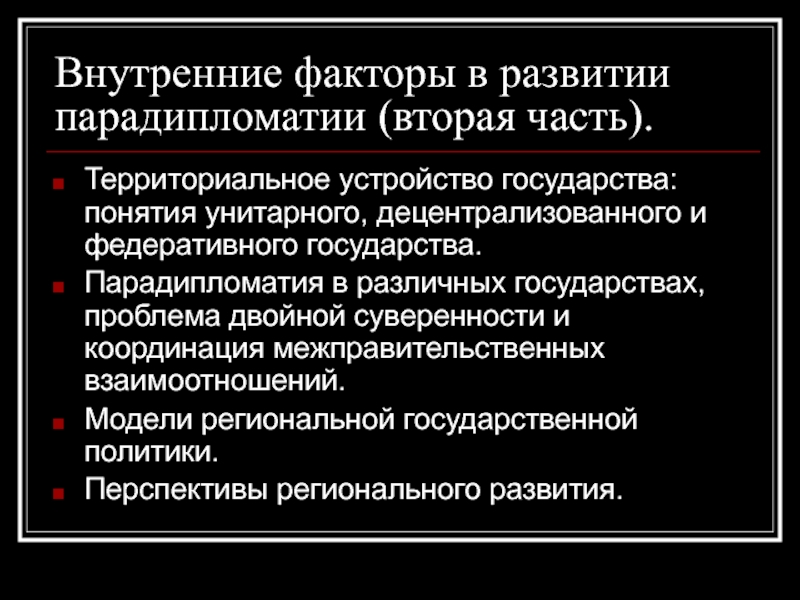- Главная
- Разное
- Дизайн
- Бизнес и предпринимательство
- Аналитика
- Образование
- Развлечения
- Красота и здоровье
- Финансы
- Государство
- Путешествия
- Спорт
- Недвижимость
- Армия
- Графика
- Культурология
- Еда и кулинария
- Лингвистика
- Английский язык
- Астрономия
- Алгебра
- Биология
- География
- Детские презентации
- Информатика
- История
- Литература
- Маркетинг
- Математика
- Медицина
- Менеджмент
- Музыка
- МХК
- Немецкий язык
- ОБЖ
- Обществознание
- Окружающий мир
- Педагогика
- Русский язык
- Технология
- Физика
- Философия
- Химия
- Шаблоны, картинки для презентаций
- Экология
- Экономика
- Юриспруденция
South China Sea tensions презентация
Содержание
- 1. South China Sea tensions
- 2. South China Sea
- 3. Natural resources – oil and gas. “Industrial
- 4. South China Sea extremely busy trade route
- 5. Building military bases – questions over purpose.
- 6. ADIZ – “East China Sea air Defence
- 7. Government has successfully used state-controlled media and
- 8. US strengthening ties with ASEAN, and security
- 9. Who are the stakeholders involved – this
- 10. What is the domestic situation within those
- 11. THBT the US should withdraw from East
Слайд 3Natural resources – oil and gas. “Industrial revolution of Asia”
Fisheries –
Control of trade routes.
Exclusive Economic Zones
Why is it disputed?
Слайд 4South China Sea extremely busy trade route – 5 trillion in
US credibility among Asian states.
Relationship with China – wants cooperation on global issues like climate change.
Interests of Western states
Слайд 5Building military bases – questions over purpose. Potential for aircraft deployment,
Chinese shows of strength – e.g launching missiles
Construction of artificial islands – increases power projection.
Chinese navy and coastguard attacking and expelling fishermen from other countries – e.g Vietnam
Actions and goals of China
Слайд 6ADIZ – “East China Sea air Defence Identification Zone” – China
China far weaker in East China Sea – Japan has a defence treaty with U.S.
The more de facto control China controls over the South China Sea region, the harder it is to dislodge them in future.
Actions/Goals China cont.
Слайд 7Government has successfully used state-controlled media and subtle propaganda- themes and
Distracts from domestic problems – makes dissent seem “anti-Chinese”.
CCP identity – the party having its own sphere of influence and wanting people ideologically aligned with them.
Domestic opinion in China
Слайд 8US strengthening ties with ASEAN, and security cooperation with countries in
Other SE Asian countries signalling desire for security cooperation with both each other and the US.
US sending warships into South China Sea, including waters China claims for their exclusive activity, to deter expansionism and militarisation.
Reactions
Слайд 9Who are the stakeholders involved – this doesn’t just mean states,
What do stakeholders want – what is directly affected by the motion, and what could be indirectly affected?
How do the stakeholders relate to one another, and how? Do they have a power dynamic, trade with them, have cultural influence?
General IR principles
Слайд 10What is the domestic situation within those states – how will
What are the motivations of the government – both realist and constructivist.
IR principles cont.
Слайд 11THBT the US should withdraw from East Asia and cede regional
Example motion
